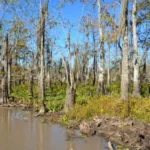Hypoxylon Canker: A Threat to Trees
Hypoxylon canker is a fungal disease that affects various types of trees. While the name might sound intimidating, understanding this tree ailment is crucial for keeping your trees healthy. In this article, we’ll explore what this fungi is, its symptoms, and how to protect your trees from this threat.
What is Hypoxylon Canker?
Hypoxylon canker, scientifically known as Biscogniauxia atropunctata, is a fungal disease that primarily affects hardwood trees. It typically targets older or stressed trees, making them vulnerable to infection. Hypoxylon Canker is an opportunistic fungi, opportunistic fungi are a constantly evolving group of pathogens that plague a growing group of vulnerable patients. The disease originates from fungal spores that enter the tree through wounds or injuries in the bark.
Signs and Symptoms
Detecting hypoxylon canker early is essential for effective management. Here are some common signs and symptoms to watch for:
- Cankers: The disease causes sunken or raised areas on the tree’s bark, known as cankers. These cankers often ooze a black, tar-like substance.
- Bleeding Spots: These are small, red or black spots that look like they’re bleeding. They are often one of the first visible signs of the disease.
- Wilting and Dieback: Infected trees may show signs of wilting leaves, starting from the top of the tree and progressing downward. Branches and limbs may die back over time.
- Reduced Foliage: Trees suffering from this fungi often have fewer leaves and sparse canopies.
Conditions Favoring Hypoxylon Canker
Several conditions can encourage the development of hypoxylon canker:
- Stress: Trees under stress from factors like drought, root damage, or other diseases are more susceptible.
- Aging Trees: Older trees are at greater risk as their immune systems weaken over time.

- Wounds and Injuries: Any damage to a tree, such as pruning cuts or mechanical injuries, can provide an entry point for the fungus.
Management and Prevention
Managing hypoxylon canker is challenging, but it’s possible with careful steps:
- Pruning: Prune and remove infected branches. Be sure to sterilize your pruning tools between cuts to prevent spreading the disease.
- Maintain Tree Health: Keeping your trees healthy through proper watering, fertilization, and pest control can help them resist disease.
- Avoid Stress: Minimize stress factors for your trees, such as protecting roots during construction or providing adequate water during dry periods.
- Remove Dead Trees: If a tree is severely infected, it might be best to remove it to prevent the disease from spreading to nearby trees.
Hypoxylon canker is a concerning disease for trees, but early detection and appropriate management can help protect your trees. Keep an eye out for symptoms, maintain your tree’s health, and promptly address any injuries or stress factors. By doing so, you’ll significantly reduce the risk of this fungi affecting your trees, ensuring they stand tall and healthy for years to come.




